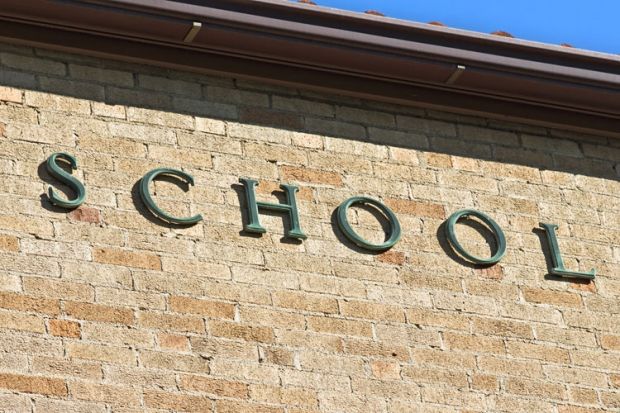Four of the five major studies into degree performance by school type indicate those from state schools outperform their private school peers at undergraduate level if they had the same secondary school results, says the Supporting Professionalism in Admissions study, titled Contextualised Admissions: Examining the Evidence, published on 18 October.
Studies by the universities of Bristol, Cardiff, Oxford and the Higher Education Funding Council for England in the past decade backed this thesis, while a 2011 report by the University of Cambridge said school type had no impact on final degree attainment, says the report.
Universities were increasingly seeking to examine applicants’ backgrounds before making offers because they wanted to find “diamond in the rough”, said Anna Mountford-Zimdars, lecturer in higher education at King’s College London, who co-authored the report.
“They recognise the high-attaining student in a low-attaining school have extra potential,” said Dr Mountford-Zimdars.
“Excellence is pushing this agenda,” she added, with universities keen to find top students with slightly lower grades because attracting top talent was “vital to their survival in a competitive marketplace”.
According to the report, over a third of universities (37 per cent) currently use contextual data in admissions. That means admissions tutors examining factors such as the overall of performance of a pupil’s school, the average university attendance rate in their neighbourhood and the relative affluence of their area, before making an offer.
Fifty-seven per cent of universities said they intend to use contextual data in admissions in the future, according to the poll of 67 universities by SPA last year.
Institutional approaches to using contextual data may vary, the report says.
Some providers lowered their entry requirements from pupils from disadvantaged backgrounds, but some made a “standard offer” – sometimes above the pupils’ predicted grades (an “aspirational” offer) – and lowered their requirements if students failed to meet the offer, the report says.
The report recommends universities publicise the reasons they make lower offers to students from poorer backgrounds because it may encourage more students from disadvantaged backgrounds to apply to them.
It also recommends a pilot project to see if new “indicators” could be introduced in higher education admissions, including a “school selectivity indicator” to alert admissions tutors to the type of school (grammar, independent, comprehensive, etc) attended by pupils or a “household income indicator” to provide more information about an applicant’s social background.
Register to continue
Why register?
- Registration is free and only takes a moment
- Once registered, you can read 3 articles a month
- Sign up for our newsletter
Subscribe
Or subscribe for unlimited access to:
- Unlimited access to news, views, insights & reviews
- Digital editions
- Digital access to THE’s university and college rankings analysis
Already registered or a current subscriber? Login




